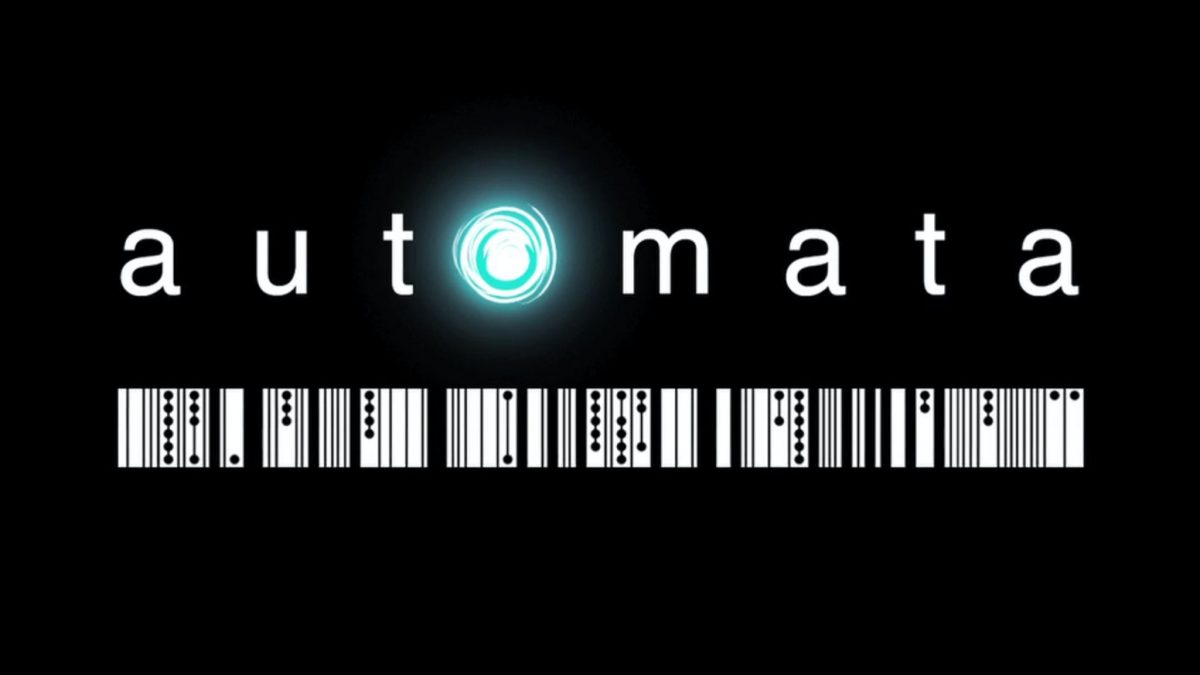If you want to know what this is about or how we got here, read on. Otherwise, If you’re just here for the updated reference, click here.
Back in 2009, Penny Arcade published a noir detective comic best summarized as “prohibition with robots” called Automata.
I was immediately interested in the barcode-like text used to denote the language of the titular automata, known as Clickwise, but I initially dismissed it as most likely purely decorative, rather than actually functional. At least, I did up until the third comic, Silverside, came out in 2014.
While the primary mode of the writing system is (in-universe, at least) a highly dense form of communication designed entirely for use among automata (as in the above image) there was one snippet on the Silverside cover page that seemed to imply a more direct mapping into English:

“KEEP OUT” is an interesting text to start with. It contains three of the five vowels, revealing the correlation between vowel position in the alphabet and bar thickness. Even without specimens of A and I, it was easy to guess what they’d look like. In addition, P, T, and K are the unvoiced labial, alveolar, and velar stops, but this sample is too small to conclude whether that phonetic information reveals any pattern. Their positions in the alphabet certainly don’t seem relevant. For a year, though, this was all we had to go on, right up until the Automata short film Kickstarter went live in 2015.
Suddenly, there were a bunch more samples of the writing, and I started breaking it down. Pins with characters’ names: “REGAL,” “SWANGEE,” “VERNA SOUTHERN.” Stretch goals locked with the text “TO BE ANNOUNCED.” A hoodie whose arm read “RAISE THIS ARM TO INITIATE REVOLUTION”. A t-shirt whose left arm read “LEFT ARM” (who would have guessed) and an ad for the shirt which said “SWANGE3.”
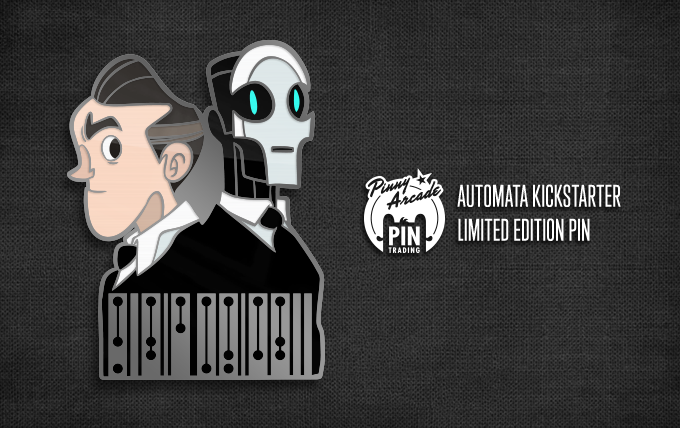
With these samples, I had most of the alphabet covered. Only J, Q, X, Y, and Z were missing. I documented all of this on the blog that formerly lived at this address, but sadly, this still left me missing a third of my first name, which I lamented, and signed the post “END TRANSMISSION” instead.
Somehow or another, Jerry Holkins, the writer for these comics and the creator of Clickwise, saw my blog and generously dropped the glyph for J in the news post so I could write my name. (Thanks, dude!) Now only four letters remained unattested.
That was six years ago. In the intervening time, nothing new came to light. Production on the Automata short film took two years to fully complete. When I finally got to watch it in 2017, as great as it was, the only new Clickwise text was a sign reading “NO HEART NO SOUL NO SERVICE.”
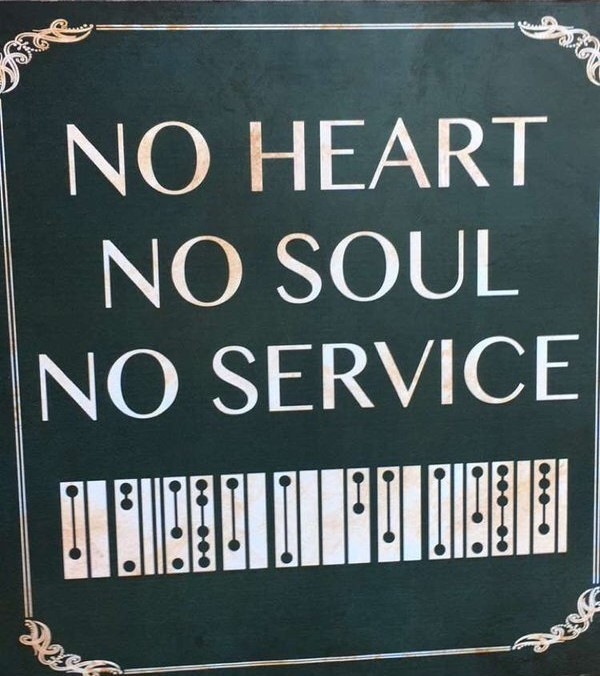
Very cool, but no new letters.
And for several more years, that was it. Penny Arcade shifted focus to other projects and discussion on the forums dried up. My attention drifted away from it to the point that I forgot all about my blog and for a while Tycho’s link to it went nowhere.
This April, I randomly started using Twitter again, saw my old posts about Clickwise, and realized my inattention had resulted in dead links, so I got a new page up in its place. This got me interested in blogging again so, I ported the page over to WordPress and cleaned up the letter charts. I also figured it wouldn’t hurt to do some Googling and see if anything new had come up, and I found something that had flown under my radar when it released back in 2018: A card game called Automata Noir.
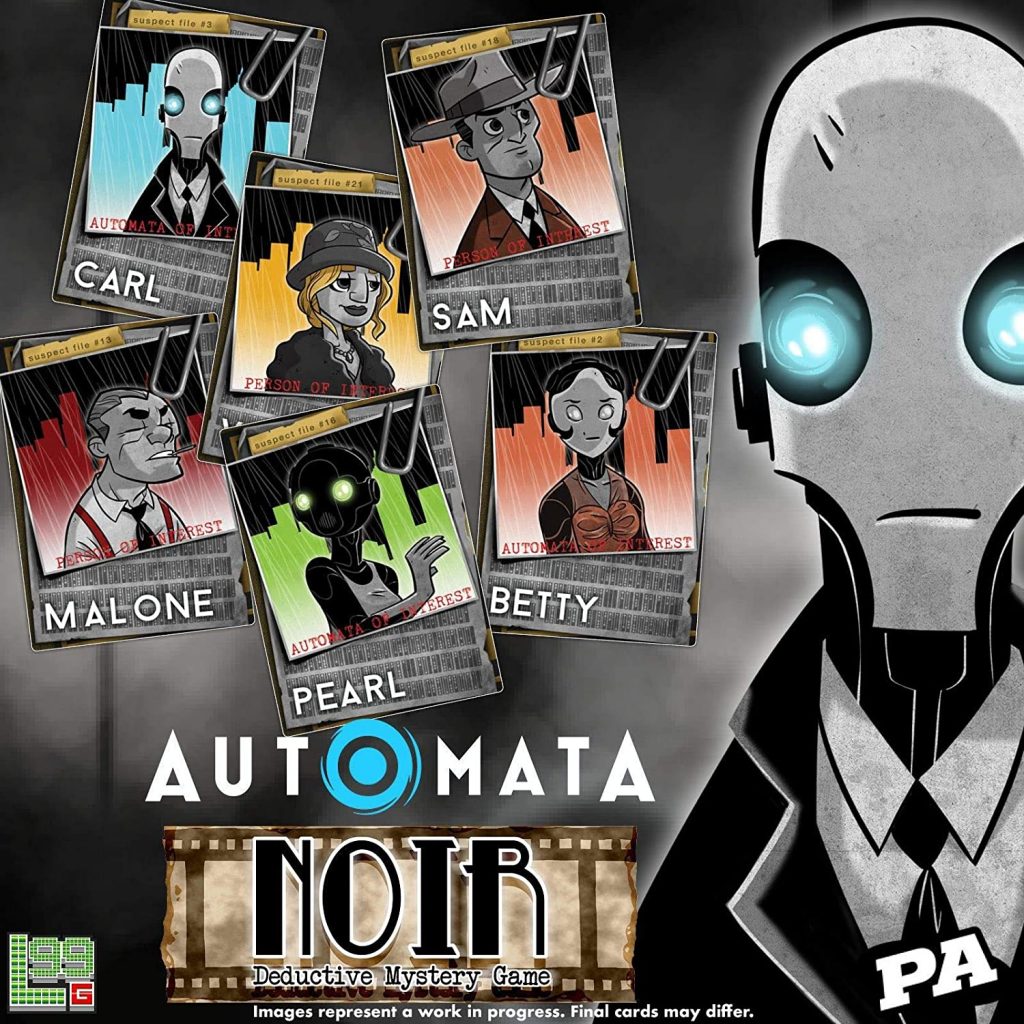
Of course, the veritable reams of Clickwise text in the card background art immediately caught my attention. I found a high-res image on BoardGameGeek and started transcribing it.
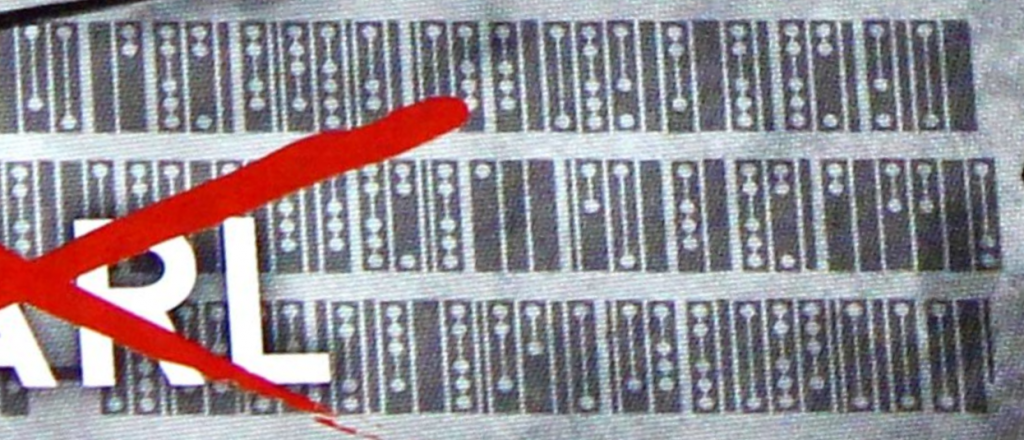
The text in the image above reads as follows:
…ONS OF THE PACKAGE AND DISTRIBUTE THE RESU
…TION PROVIDED THAT ?OU ALSO DO THE FOLLOW
[obscured] E?ECUTABLES AND TESTCASES SO
I was stunned. Those words have to be “YOU” and “EXECUTABLES!” This has been out there in the world since 2018 and I missed it! Still, it seems no one else noticed it either, so even though I’m three years late, I think I can still claim to be the first to identify the letters X and Y. (To be fair, nobody else probably cares, but it was exciting to me, darn it!)
I have updated the Clickwise reference page and ordered a copy of the game, both to mess around with it and to scan it for higher resolution images. I’m hoping that by stacking up the art of enough cards with different names in the bottom left corner I can reveal that text sufficiently to read it. The card for the character named simply “X” seems like it could prove very helpful in that endeavor. Is it too much to hope for a Q and a Z?
There is this extremely curious bit of text from the listing for the game on the Penny Arcade store:
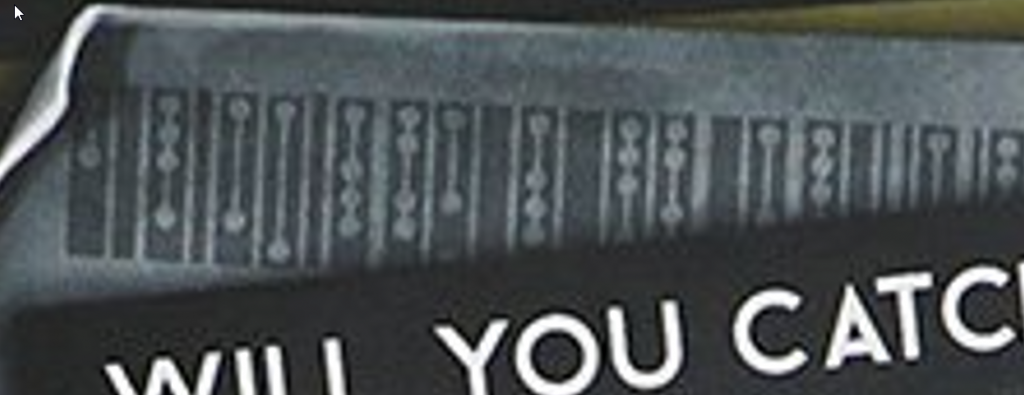
It reads “LICENSED PRODUCT OR ?IA A? A?-” The two-letter word is probably AN or AS, but what’s that three-letter word? CIA? Maybe, but if you look real close at that letter… it really looks like it has four dots in a row starting at the top. If that’s the case, this must be either Q or Z, but what does the rest of it look like? And which is it? I can’t find any meaningful results for “QIA” or “ZIA.” Gah! To come so close to seeing what is quite possibly the penultimate missing letter is so frustrating!
Update: Upon closer inspection (the same image is on the bottom of the game box) the letter starts with only three dots, so it’s probably either C or V. Like the rest of the card background test, this appears to be taken from an open source software license, in this case the Motosoto license.
Ah well. The search continues…
